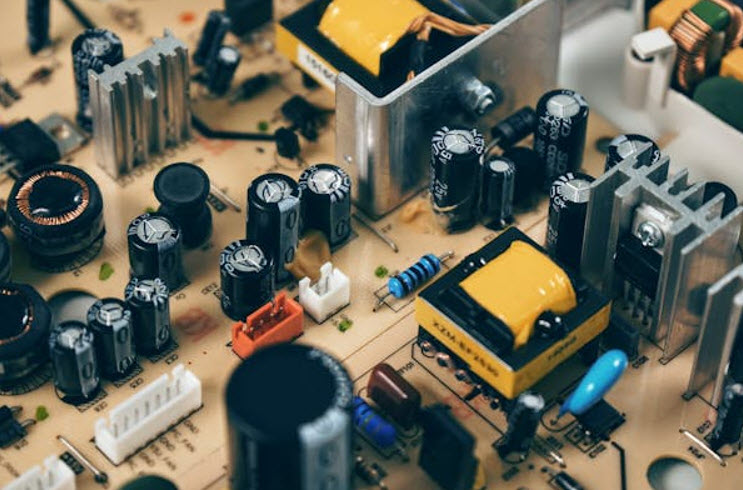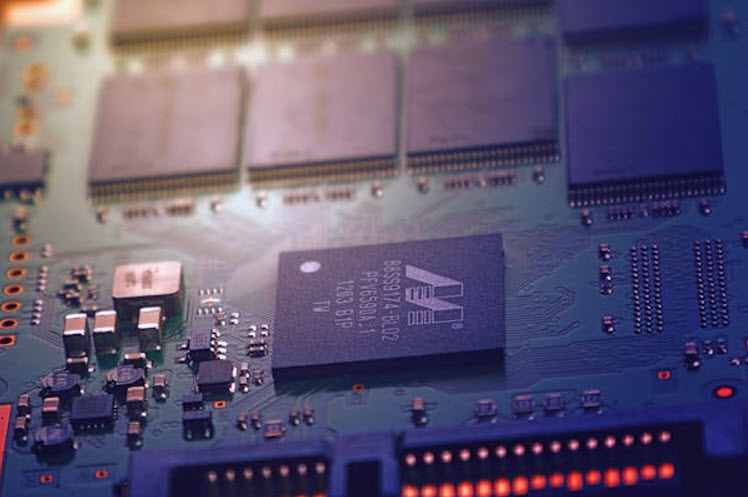Last Updated: August 8th, 2024
Is the question “How are electronics recycled?” ever crossed your mind? If so, it’s time to receive a response at last.
This post will answer your questions about what occurs with the rare earth substances contained in electronics and how recycling electronics varies from other types of recycling. Discover the complete procedure of recycling electronics by continuing to read.
To begin, let’s define what electronics recycling entails.

Electronics Recycling: What Is It?
For the purpose of utilizing the electronics’ recoverable characteristics, electronics recycling is, in its most basic form, the process of gathering, sorting, and recycling electronics.
This procedure further attempts to safeguard the environment from possibly hazardous materials finding their way into landfills and seeping into the water, earth, and air.
Additionally, recycling outdated equipment helps to securely remove any personal data that may have been stored there. This protects businesses against identity theft, data breaches, and disclosures of confidential information.
Electronics That Are Recyclable: Types
Probably the first thing that springs to mind when considering recyclable electronics is your laptop or smartphone. Nowadays, many high-end devices may be recycled in our tech-savvy, modern society.
However, a plethora of different kinds of electronics are also capable of being recycled. The list is endless. As a matter of fact, several companies performing electronic recycling Toronto report companies own a vast amount of reusable outdated office equipment, such as desktop PCs and printers.
The Detailed Procedure for Recycling Electronics
Now that you are aware, it’s time to finally provide an answer to the question, “How are electronics recycled?” after explaining what the recycling of electronics is and what kinds of electronics may be recycled.
Continue reading to learn about each stage involved in recycling electronics.
Gather Electronics
In order to recycle electronics, you must first gather them. Anywhere that technology is utilized, one may find these outdated devices.
To initiate an electronic disposal campaign at your organization, just establish a corporate device recycling plan and rally your staff behind the cause. Having a well-thought-out plan will greatly ease the process of gathering outdated gadgets from your workplace or facility.
Deliver electronics to an authorized recycler of electronics.
Possibly one of the most crucial actions in transporting the devices to a recognized electronics recycler is the procedure. Before the recycling procedure, you should make sure that the facility where you submit your old gadgets can wipe confidential data off of them.
Additionally, you must guarantee that the facility adheres to appropriate electronics recycling procedures and is ecologically benign.

Subsequently, a lot of recycling centers will provide transportation in order to come get the gadgets for you, particularly if you need to discard a large number of heavy devices. If not, you are able to personally drop off the electronics.
Destroy Electronics
The electronics are sorted and shredded when they get to the recycling center. The shredding procedure is frequently carried out by hand, with each electronic item being carefully removed, disassembled, and investigated.
The electronics are classified once they have been disassembled component by component.
Arrange Electronics
Why electronics aren’t categorized before they’re shredded may be on your mind. The various components of the electronic gadget must be removed, which is why it’s crucial to finish the shredding process first.
Perplexing? A range of metals, polymers, glass, compounds (such as fluorescent bulbs, cartridges for toner, etc.), and other materials can be found in some electronics. It is necessary to disassemble the electronics before sorting these parts. These components are then recycled after being categorized.
Before the items are transferred farther along the recycling process, dangerous elements (such as cathode light tubes) are eliminated at this phase.
Dust Removal
Next, a conveyor belt is used to carry out a procedure known as dust extraction on the electronic’s leftover parts. After the parts are dispersed and shaken on the belt, dust is gathered and discarded.
This mechanism is in place to make sure that recycling doesn’t negatively impact the environment.
Magnetic Disturbance
It’s time to perform the magnetic distinction between non-ferrous and ferrous metals once the allergen has been removed. In this stage, steel and iron are drawn in and separated from other materials using powerful magnets.
This step is essential since metal and plastic recycling must be done separately.
Water Distillation
Following the metal’s separation from other components by the magnets, water separation occurs. In this process, hydraulics are utilized to safely and effectively separate glass from plastic.
Glass may be recycled differently (https://www.epa.gov/recycle/recycling-basics-and-benefits), much like metal and plastic.
Cleansing
The garbage is further purified and tested to verify that every component is appropriately broken down and repurposed.
For instance, the electronics recycling center would often inspect the items to remove any paint, corrosion, or other substances if it is equipped to melt down metals on-site. The metal may then be purified and melted more effectively.
